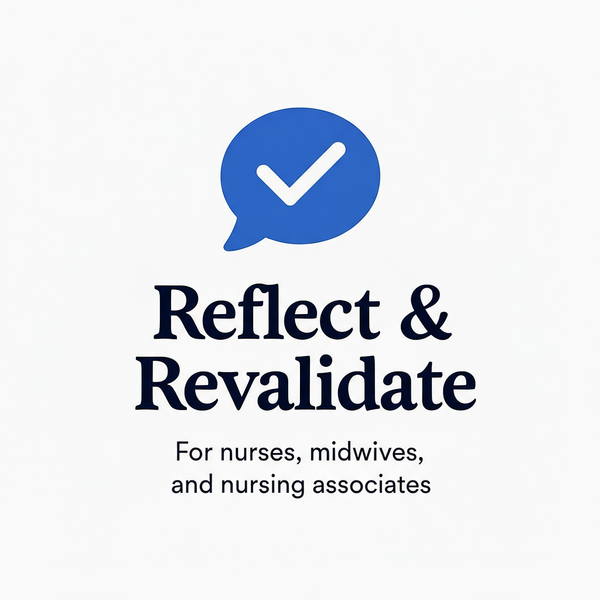Reflection: Challenging Stigma on a General Medical Ward
Share
Submitted by: D.R. - Mental Health Liaison Nurse
What was the nature of the CPD activity and what did you hope to learn from it?
I was called to the general medical ward to assess Marcus (pseudonym), a 45-year-old man with schizophrenia who had been admitted with pneumonia. The ward staff had requested a mental health review because Marcus was 'difficult' and 'refusing to cooperate with treatment.'
When I arrived, I overheard a staff member say 'He's one of those psychiatric patients—you know what they're like.' I found Marcus sitting alone, looking anxious and withdrawn. When I spoke to him, he explained that he found the busy ward overwhelming, the noise triggered his anxiety, and he felt the staff were dismissive of him because of his mental health diagnosis.
I realised this wasn't a mental health crisis—it was a case of stigma and lack of understanding affecting Marcus's care. I hoped to learn how to challenge stigma effectively, advocate for patients with mental health conditions in general healthcare settings, and educate colleagues about mental health.
What did you learn from the CPD activity?
I learned that stigma in healthcare settings can significantly impact patient care and outcomes. Marcus wasn't being 'difficult'—his needs simply weren't being understood or met. The staff had made assumptions based on his psychiatric diagnosis rather than treating him as an individual with both physical and mental health needs.
I learned the importance of education over confrontation when challenging stigma. Rather than criticising the staff, I used Marcus's case as a teaching opportunity, explaining how environmental factors can affect people with mental health conditions and suggesting simple adjustments that could help.
The experience taught me about reasonable adjustments for mental health conditions. We moved Marcus to a quieter side room, reduced unnecessary interruptions, and ensured he had the same nurse each shift for continuity. These simple changes dramatically improved his engagement with treatment.
I also learned the value of collaborative working between mental health and physical health services. By working alongside the ward team rather than just 'assessing and leaving,' I helped them understand Marcus's needs and develop confidence in caring for patients with mental health conditions.
How did you change or improve my practice as a result?
I now proactively offer education and support to general healthcare colleagues when I'm called to assess patients with mental health conditions. Rather than just completing my assessment, I take time to discuss the patient's needs, suggest practical strategies, and answer questions the team might have.
I've developed resources for general wards about caring for patients with mental health conditions, including guidance on reasonable adjustments, communication strategies, and when to seek mental health support. These resources have been well-received and are now used across the hospital.
I've also become more assertive in challenging stigmatising language and attitudes when I encounter them. I do this respectfully but clearly, explaining the impact of stigma on patients and encouraging person-centred, compassionate care for all patients regardless of their diagnoses.
Following this experience, I established regular mental health awareness sessions for general ward staff, helping to reduce stigma and improve care for patients with mental health conditions across the hospital.
How is this relevant to the Code?
This reflection demonstrates several aspects of the NMC Code:
Treat people with respect (1.1): I advocated for Marcus to be treated with the same dignity and respect as any other patient, regardless of his mental health diagnosis.
Act as an advocate (3.4): I spoke up for Marcus when his needs weren't being met and challenged attitudes that were affecting his care.
Raise concerns immediately (16.1): I addressed the stigmatising attitudes I witnessed, recognising that they posed a risk to patient care and dignity.
Promote professionalism and trust (20.7): I made sure I didn't express personal beliefs in an inappropriate way and instead promoted evidence-based, compassionate care.
Support students and colleagues (9.4): I shared my knowledge and experience with ward colleagues to help them develop their skills in caring for patients with mental health conditions.
Do you have any further comments?
Marcus's physical health improved once his mental health needs were understood and accommodated. He was discharged home with appropriate follow-up for both his physical and mental health. The ward staff thanked me for helping them understand his needs better and said they felt more confident caring for patients with mental health conditions in the future.
This experience reinforced for me that mental health stigma remains a significant barrier to good healthcare. As mental health professionals, we have a responsibility not just to care for our own patients, but to educate colleagues, challenge stigma, and advocate for parity of esteem between physical and mental health.
I've learned that changing attitudes takes time, patience, and education rather than confrontation. By working collaboratively with colleagues and using real patient experiences as teaching opportunities, we can gradually reduce stigma and improve care for all patients.
